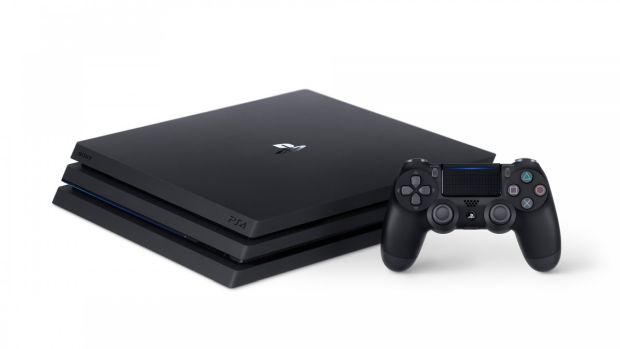
One of the hallmarks of PC gaming is flexibility: the ability to scale, mix and match experiences to best meet your expectations. Modern game engines are often built with scalability in mind—settings sliders can let you adjust draw distance, mesh quality, even the number of trees in your vicinity, with fine-grained precision. But, perhaps most importantly, in 9/10 cases, PC games allow you to make that most basic of tradeoffs: resolution for framerate. We’re not here to beat the old 30 FPS versus 60 FPS horse.
Yes, you can tell the difference, and yes it does have a palpable impact on playability, depending on what you’re playing and how you’re playing it. I game primarily on an overclocked, 83 Hz monitor. And yes, that’s luxuriantly smooth in games like Doom, and Prey. But I am just as content to run Mass Effect: Andromeda, heavily ENB-fied Skyrim, and the like at lower framerates. (Also, as a long-time fan, I actually loved Andromeda. *flies away*).
The relative merits of 30 FPS and 60 FPS gaming are for you to decide on. What matters is that PC puts that decision in your hands. In the case of the original eighth-gen consoles, locked resolution and framerates were, in a sense, a boon. With a paltry amount of processing power, the PS4 and Xbox One tended to become CPU-bound well before GPU constraints were hit—higher framerates were often just not possible, however graphically intensive the title was. Alien: Isolation is a good example of this: the 750 Ti, a regular stand-in for the PS4’s GPU, delivers a locked 60-FPS update when paired with middle-of-the-road Core i processor.
The PS4, however, only manages to deliver a more-or-less stable 30 FPS update, with dips below. Moreover, as the years rolled by, GPU constraints have become increasingly evident, with sub-native and dynamic resolutions becoming the norm for AAA titles. The midcycle refreshes—Scorpio and the PS4 Pro—are targeted squarely at owners of 4K displays. However, 4K is still a few years away from mainstream adoption. There is a massive potential market of console gamers on 1080p displays who are currently getting a rather sub-par experience on the PS4 and Xbox One.
It’s debatable as to whether or not the PS4 Pro serves up an adequate 4K experience. Coming from the PC space, I am dissatisfied with the 4K performance of hardware that’s twice as fast as the Pro. And while the Scorpio promises better, we are still yet to see gameplay footage. Real potential—the people Sony at least seems to pretend don’t exist—lies with the aforementioned owners of 1080p TVs. At a firmware level, Sony doesn’t expose the Pro’s complete hardware to unpatched games. Rather, “boost mode,” as it stands, just allows games to make use of the slightly higher GPU and CPU clocks, delivering a slightly more consistent framerate at best. Mark Cerny’s reasoning, that this is to “ensure compatibility,” is unconvincing, to say the least.
Most multiplatforms today are developed with PC as the lead platform. Even in the case of exclusives, actual development takes place on PC machines (obviously). Existing multiplats today run on a mindbogglingly wide assortment of PCs—literally 100s of possible hardware configurations. There is really no reason as to why games can’t make use of the Pro’s additional resources—PC titles don’t have trouble utilizing the additional horsepower if you swap in a more powerful graphics card. Moreover, ensuring that all existing titles run and look tangibly better, is one of Microsoft’s promises for the Scorpio.
The way things stand right now, Sony seems to be shrugging the responsibility off to developers: Only a handful of older titles have received Pro patches. Several games offer users the option to downsample from a higher resolution for better AA. A handful of third party titles, such as Final Fantasy 15, Shadow of Mordor, The Surge and Nioh actually offer high-performance or high-visual quality modes at 1080p, giving Pro owners justifiable bang for their buck. But a few, such as Prey, (which by all rights should hit 1080p/60 on the Pro), don’t even offer downsampling.
This leads us to a scenario where your new, expense box, that’s both bulkier and pulls more power than its predecessor, ends up running most games…exactly the same as before or with the bare minimal upgrade. This is a patently ridiculous state of affairs. The only logical explanation we can think of for this is that Sony’s dug itself so far down the “this isn’t a new console” rabbit-hole that it really doesn’t want to give Pro owners a better experience. Fobbing Pro support off to developers is a good way to ensure that it’s never ideal—time’s money and, considering the Pro’s rather tepid adoption rate, not every developer would be bothered to put in the extra couple man-hours to enable decent Pro support. What can be done to rectify this? We feel that a bit of out-of-the-box thinking is necessary.
For starters, Sony needs to implement an actual boost mode. All 36 CUs need to be exposed to a given game’s code. Games should, at the very least, be given access to the system’s entire resource pool. How effectively that’s utilized is secondary. Secondly, output resolution should be toggleable. At the very least, 4K output mode should be an option in system settings, irrespective of the display actual resolution. This would function much like downsampling in Windows, and ensure that players have access to a high-resolution option, irrespective of their display. Secondly, developers themselves would do well to approach the Pro in much the same way as they’d approach a midrange PC.
How does that work? Settings! PC users have been able to toggle visual settings for, well, forever. A handful of console titles, such as Project CARS, The Division and The Surge actually give users a degree of control over the console version’s visual makeup. This, in addition to performance/visual presets as seen in Final Fantasy 15 and Nioh, would put power in the hands of Pro owners. Those leaked Pro whitepapers from ages ago indicate that Sony has a say in terms of setting the guidelines developers adhere to. Instead of laying out constraints on what developers can do with the Pro, why not require the inclusion of performance and visual presets for Pro games at 1080p?
At the end of the day, getting a better 1080p experience on the PS4 Pro requires effort from both developers and Sony. While attempts so far have largely been half-hearted, the impending arrival of the Xbox Scorpio, which promises an enhanced experience on all existing titles, may spur Sony to action.















